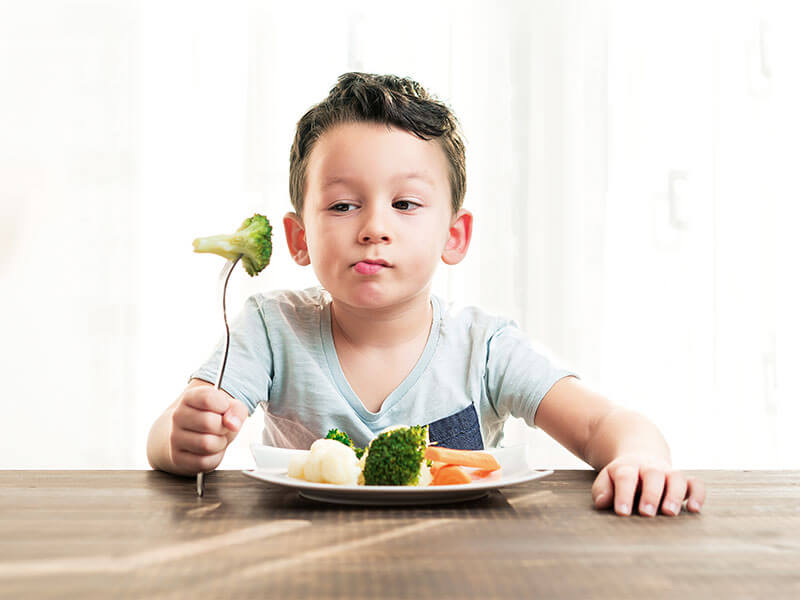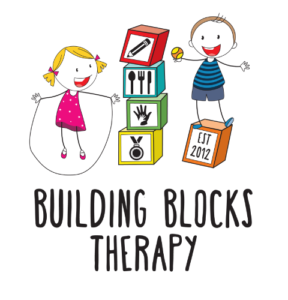
Eating is a big part of everyday life – we need food for energy, to keep our bodies going throughout the day, as well as for nutrients, vitamins and minerals to keep our bodies healthy and strong! It is not always easy to maintain balance in our diets and to eat what is expected of us, particularly for little ones who may find the very idea of placing a vegetable in their mouth way too much for them to handle! High pressure environments and negative associations with food may contribute to the avoidances our little ones have around food, so it is important to think about this and consider it when we encourage interaction with food throughout the day.
Eating is a very sensory-based activity – we use our sense of smell, touch, taste and vision when interacting with food, and even our sense of hearing! We see colours and shapes of food, feel different textures and temperatures (with our hands and with our mouths), taste different flavours, smell different aromas (which can be even further heightened when cooking is taking place) and even hear different sounds, such as crunching, frying and slurping! Everyone has different sensory preferences, in terms of sensory avoidances and sensory seeking behaviours, which means that each individual has a different relationship with food! Children in particular are still developing their relationships with food, as they continue to explore what they might like and dislike! Some of us like soft textures, whilst some prefer crunchy textures. Some of us may like the smell of a certain food while others can’t handle the same smell! We are all unique, just as our children are, which means that forcing them upon certain experiences can be overwhelming and uncomfortable for them, and even anxiety-provoking, just as it might be for us as adults!
Below are some practical ideas and strategies that can be used at home to help make mealtimes less strenuous and anxiety-provoking:
- Keep things fun with food play! This is really important for developing sensory interactions with food from an early stage. Provide your child with a plate of food, with various textures and tastes, depending on your child’s age (mashed potato, crunchy carrots, banana) and encourage them to pick the food up with their hands and play with it – encourage them to touch, lick, taste and chew the different foods and to explore it in their own way! This way, they are interacting with food and allowing themselves to explore it in a sensory and hands on way!
- Normalisation of food – food can be explored without even being present! Draw pictures of fruit and vegies and colour in images of them! Make different items and craft with food, such as pasta necklaces, finger painting with yoghurt, stamping with fruit and creating faces with different food objects, such as pasta for hair, grapes/sultanas for eyes, capsicum for a mouth and or strawberries for a nose. Normalising food is important, particularly if your child is aversive to food or food-related experiences. By exploring food this way, it allows the child to see that we are interacting with food in a non-threatening, relaxed environment and promotes knowledge around food overall!
- Keep the environment relaxed and try to alleviate pressure around food – if we feel too much pressure to do something, it can cause an anxiety response and lead to us avoiding it altogether, creating an anxiety-fuelled relationship that can be tricky to combat. Instead, provide some different options for food (without providing too much and creating choices aplenty) and keep them all out on the table for everyone to choose and share! Model eating the different foods so your child/ren can see you enjoy it, smile and use positive language and allow your child space to eat!
- Involve your children in the process – get your kids preparing and cooking meals with you, where appropriate! Encourage your little ones to help you mix items together in a bowl when making cakes or baking, or even helping you make a sauce! Encourage them to set the table and to assist with the whole routine around mealtimes to further normalise the experience.
- Play and interact with different food textures – make different things with different food items! Here are some ideas:
- hide some novelty objects (such as toy cars or numbers and letters) inside a tub of rice or pasta to create a treasure hunt and lucky dip with your child
- create “dirt” using lentils, dried beans and breadcrumbs and drive toy cars and trucks through it
- imaginative play with a swamp – use spreads, dips and yoghurt to create a swamp with mud and place in it a variety of plastic animals
- Let your child decide when they are full – provide your child with the appropriate amount of time required to eat their snack or meal (5-20 minutes) and let them decide when they are full! Try to keep eating times at the table with minimal distractions. This encourages them to feel more in control and less anxious around food. Generally, your child should be able to decide and feel when they are full if they are medically equipped and sound
These are a few simple, fun ways of encouraging your child to interact with and be more comfortable around food. Remember – keeping things calm and stress-free is often a good place to start!
If you feel your child would benefit from occupational therapy sessions working on these food-related skills, please contact the Building Blocks Therapy Clinic for more information.
Emily Vincent
Occupational Therapist
